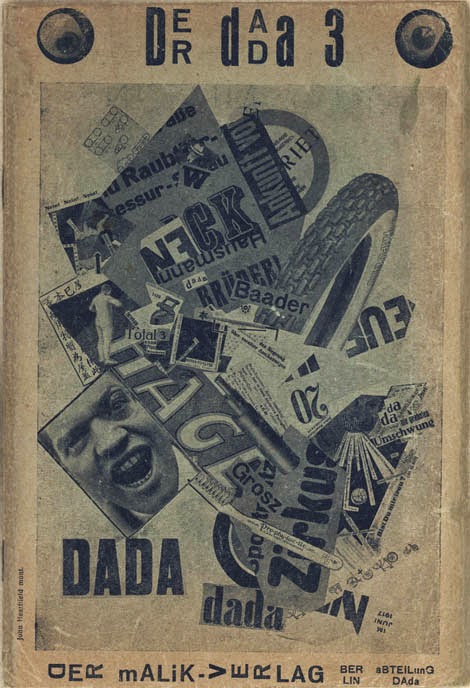As WWI ended back in 1918 Art Deco was born which style gave
its first appearance in France just before it expanded internationally starting
during the 1920’s, and kept on going to the 40’s which popularity faded away
just after WWII.
Due that this style came just after the First World War, one
would not forget to mention the depressing moments that the population was in,
yet during those days the world was going into a culture which was quickly
transforming into a better everyday life due to new things in technology were
being discovered. Yet, buildings were getting higher (skyscrapers), trains and cars were getting faster and people got new places to go whilst they started to enjoy their night life and above all people were getting
luxury and glamorous things which eventually mass production became a huge
demand.
Without any doubt, it’s one of the most beautiful styles
ever; however this is caused by the whole lot of different combinations joined
in one artefact. This style includes a lot of traditional subjects in art such as
curves, geometrical shapes, vertical lines, symmetry, simplified forms,
zigzags, ‘sun rays’ and the very new airbrushing technique together with the rich
colours used.
One of the most influential graphic designers in the Deco
era was without any doubt A.M. Cassandre, whom lit up the streets with his
beautiful art works in poster design. As one observes his posters one would
notice the simplified illustrations together with stylised typography which
generally he invented himself. The illustrations Cassanadre built up were
generally silhouettes as when he interpreted a human figure, and when it wasn’t;
well he simplified it as well, yet with geometric shapes this means that his
artworks were all 2D, but interesting enough he still gave them great looks as
though they were flat, the airbrush effect gave the image a lot of contrast
whenever it came to different shades of colour.
The simplified subject on the poster interpreted by Casandre were generally ships, trains and humans as his works were about advertising which came to an improvement as one would look at his poster design even if one didn't want to just because of the well design and as he believed he quoted ‘means of communication between the seller and the public, somewhat like a telegraph. The poster designer is like a telephone operator: he does not draft the messages, he dispatches them. No one asks him what he thinks; all he is asked to do is to communicate clearly, powerfully and precisely.’
The simplified subject on the poster interpreted by Casandre were generally ships, trains and humans as his works were about advertising which came to an improvement as one would look at his poster design even if one didn't want to just because of the well design and as he believed he quoted ‘means of communication between the seller and the public, somewhat like a telegraph. The poster designer is like a telephone operator: he does not draft the messages, he dispatches them. No one asks him what he thinks; all he is asked to do is to communicate clearly, powerfully and precisely.’
Nowadays art deco seems like to being used again, one of the
most influenced film in today’s scene with the Deco style is ‘The Great Gatsby’.
Obviously enough the story is based on
the life during them days, yet; the set design, poster, music were beautifully
drawn along the movie. Apart from that we still inspire ourselves in graphic
design today as we all know that the simplest things are the most extraordinary
and I believe that causes looking in our era today things are quite simplified
when it comes to design and basic shapes/geometry shapes are still a big use in
today’s design.
Info:
Art Deco - Wikipedia, the free encyclopedia.
2014. Art Deco - Wikipedia, the free
encyclopedia. [ONLINE]
Available at:http://en.wikipedia.org/wiki/Art_Deco. [Accessed 30 December 2014].
Art Deco: A strong, striking style for graphic design - Designer Blog. 2014.Art Deco: A strong, striking style for graphic design - Designer Blog. [ONLINE] Available at: http://99designs.com/designer-blog/2012/06/05/art-deco-a-strong-striking-style-for-graphic-design/. [Accessed 30 December 2014].
Art Deco: A strong, striking style for graphic design - Designer Blog. 2014.Art Deco: A strong, striking style for graphic design - Designer Blog. [ONLINE] Available at: http://99designs.com/designer-blog/2012/06/05/art-deco-a-strong-striking-style-for-graphic-design/. [Accessed 30 December 2014].
Graphic Design History | Art Deco. 2014. Graphic
Design History | Art Deco.
[ONLINE] Available at:http://gds.parkland.edu/gds/!lectures/history/1925/artdeco.html. [Accessed 30 December 2014].
Pictures:
. 2014. . [ONLINE] Available at:http://upload.wikimedia.org/wikipedia/commons/5/5b/Berlin,_Mitte,_Schuetzenstrasse,_Mosse-Zentrum_05.jpg. [Accessed 30 December 2014].
. 2014. . [ONLINE] Available at:http://i.dailymail.co.uk/i/pix/2014/02/06/article-2552906-1B3D99D300000578-355_964x721.jpg. [Accessed 30 December 2014].
. 2014. . [ONLINE] Available at:https://img1.etsystatic.com/006/0/7291161/il_fullxfull.388926739_r3je.jpg. [Accessed 30 December 2014].
. 2014. . [ONLINE] Available at: http://ecx.images-amazon.com/images/I/81TJMg24wlL._SL1500_.jpg. [Accessed 30 December 2014].
. 2014. . [ONLINE] Available at: http://blog.iso50.com/wp-content/uploads/2009/01/250887022_6de2bf6e8c_o-450x323.jpg. [Accessed 30 December 2014].
. 2014. . [ONLINE] Available at:http://www.posterland.dk/bigproductimages/adolphe-mouron-cassandre-dubonnet-litografisk-tryk.jpg. [Accessed 30 December 2014].
. 2014. . [ONLINE] Available at:http://www.hdwallpapers.in/walls/the_great_gatsby_movie-wide.jpg. [Accessed 30 December 2014].
Pictures:
. 2014. . [ONLINE] Available at:http://upload.wikimedia.org/wikipedia/commons/5/5b/Berlin,_Mitte,_Schuetzenstrasse,_Mosse-Zentrum_05.jpg. [Accessed 30 December 2014].
. 2014. . [ONLINE] Available at:http://i.dailymail.co.uk/i/pix/2014/02/06/article-2552906-1B3D99D300000578-355_964x721.jpg. [Accessed 30 December 2014].
. 2014. . [ONLINE] Available at:https://img1.etsystatic.com/006/0/7291161/il_fullxfull.388926739_r3je.jpg. [Accessed 30 December 2014].
. 2014. . [ONLINE] Available at: http://ecx.images-amazon.com/images/I/81TJMg24wlL._SL1500_.jpg. [Accessed 30 December 2014].
. 2014. . [ONLINE] Available at: http://blog.iso50.com/wp-content/uploads/2009/01/250887022_6de2bf6e8c_o-450x323.jpg. [Accessed 30 December 2014].
. 2014. . [ONLINE] Available at:http://www.posterland.dk/bigproductimages/adolphe-mouron-cassandre-dubonnet-litografisk-tryk.jpg. [Accessed 30 December 2014].
. 2014. . [ONLINE] Available at:http://www.hdwallpapers.in/walls/the_great_gatsby_movie-wide.jpg. [Accessed 30 December 2014].



















